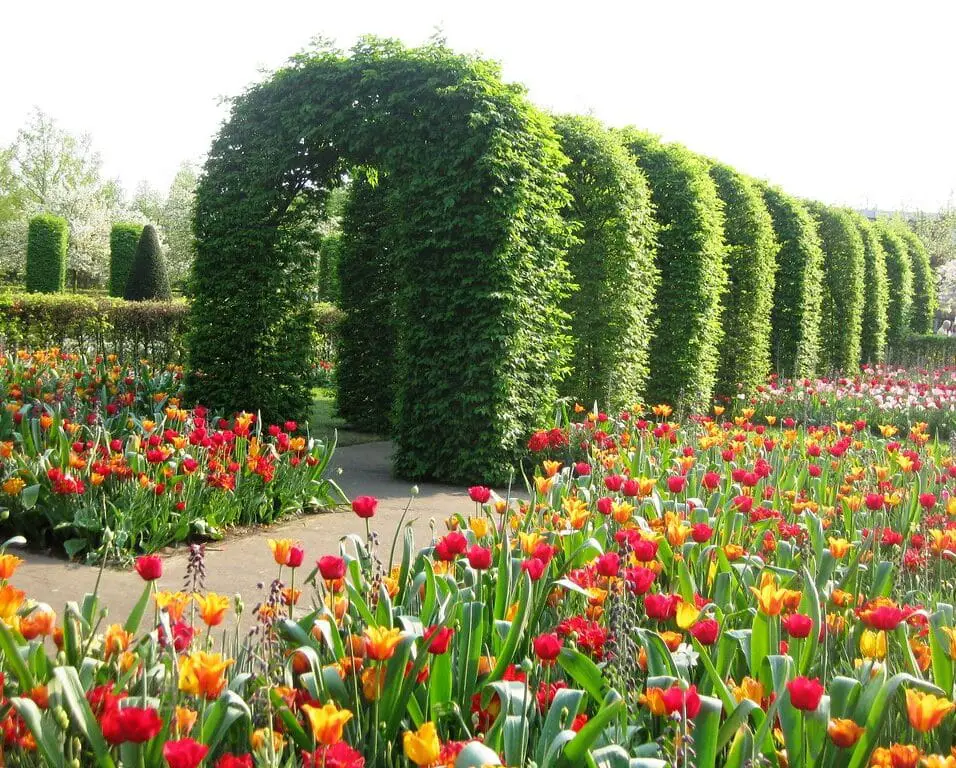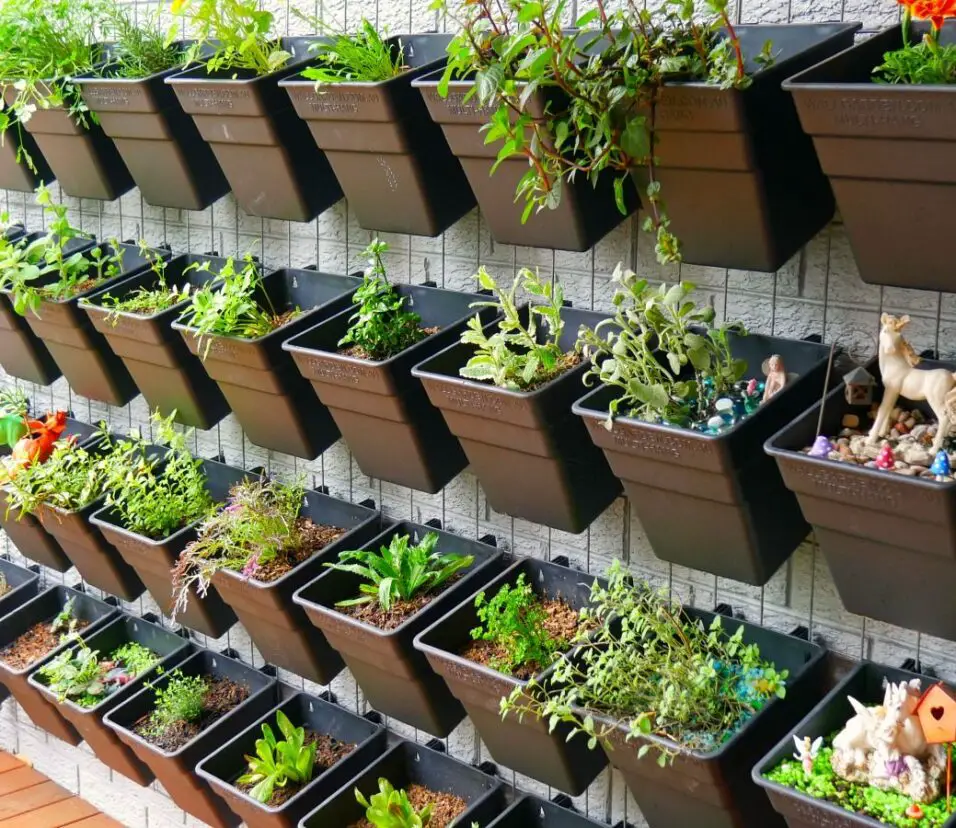What Is Wall Gardening
Introduction
Wall gardening, also known as vertical gardening or green wall systems, is a new urban horticulture method that cleverly turns vertical areas into lush gardens. This novel method maximizes vegetation and brings nature back to concrete jungles as urbanization rises and land shrinks.
Wall gardening involves growing plants vertically on walls, fences, and building sides. It blends nature and architecture to create living tapestries that improve aesthetics and sustainability. Wall gardening lets you grow gorgeous flowers, lush ferns, tasty herbs, and veggies on wasted vertical space.
The allure of wall connect garden lies not only in its space-saving attributes but also in its numerous ecological benefits. These living walls act as natural air purifiers, mitigating pollution and improving air quality, while also providing insulation that can help regulate indoor temperatures. Moreover, they play a role in supporting biodiversity by providing habitats for various insects and small animals, contributing to the overall health of ecosystems within urban environments.

What is the meaning of wall gardening?
Walled gardens are enclosed by high walls, usually for horticultural rather than security reasons, however all gardens were once fenced to defend against animal or human intruders.
Wall gardening, often known as vertical gardening, includes growing plants vertically on walls, fences, or structures. This novel method uses vertical space to grow lush plants in regions where traditional gardening is limited.
Wall gardening uses trellises, modular panels, and pockets to maximize space and make plants look good. These gardens can include herb, vegetable, and other edible plants as well as gorgeous flowers and cascading vines.
In addition to saving space, wall gardening is environmentally friendly. It improves air quality, minimizes the urban heat island effect, and beautifies buildings. It also brings vegetation to heavily crowded regions with little ground space, making it a unique urban design solution. Wall gardening truly blends nature and architecture, turning vertical surfaces into growing landscapes.
What are the benefits of wall gardening?
15 Incredible Benefits of Having a Vertical Garden
- Improves Health And Air Quality.
- Reduces The Cost Of Energy.
- Reduces Noise Levels.
- Reduces Stress.
- Helps Heal Faster.
- Help Improve Mood.
- Saves Up Space.
- Breaks Up Redundancy.
Wall gardening offers a multitude of benefits, making it a compelling choice for both urban and traditional settings. Primarily, it maximizes space utilization by utilizing vertical surfaces, ideal for areas with limited ground space. This technique enhances aesthetic appeal, adding a living, vibrant dimension to walls and structures.
Furthermore, wall gardens contribute to improved air quality by absorbing pollutants and releasing oxygen, fostering a healthier environment. They aid in regulating indoor and outdoor temperatures, providing insulation and reducing energy consumption. These gardens also support biodiversity, creating habitats for insects and birds.
In urban landscapes, wall gardening mitigates the urban heat island effect by cooling surroundings. It can also be employed for growing herbs, fruits, and vegetables, promoting local and sustainable food production. Moreover, it offers therapeutic and stress-relieving effects, connecting people with nature.
Overall, wall gardening serves as an innovative solution to various challenges in urbanization, enhancing sustainability, aesthetics, and well-being while infusing greenery into the vertical spaces of our living spaces.
What is a walled garden called?
Article Talk. Hortus conclusus is a Latin term, meaning literally “enclosed garden”. Both words in hortus conclusus refer linguistically to enclosure. It describes a genre of garden that was enclosed as a practical concern, a major theme in the history of gardening.
A walled garden is often referred to as a “hortus conclusus” or “closed garden” in Latin. This term historically encompasses the concept of a garden enclosed by walls or hedges, creating a distinct and private space for cultivation and leisure. Walled gardens were prevalent throughout history, particularly in medieval and Renaissance Europe, where they served as ornamental and productive spaces for growing various plants.
In contemporary language, a walled garden can also be called a “enclosed garden,” “walled enclosure,” or simply a “garden within walls.” The term “secret garden” is sometimes used to evoke the idea of a secluded, hidden oasis tucked away from the outside world. Additionally, modern versions of walled gardens can be referred to as “vertical gardens” or “living walls,” especially when plants are cultivated vertically on the surfaces of walls or structures.
No matter the terminology, the concept of a walled garden conjures images of serenity, cultivation, and an intimate connection between human creativity and the natural world.
What is an example of a walled garden?
Defining Walled Gardens
In the 1970s, before the creation of a major tech company like Google, Facebook, or Amazon, the best example of a walled garden was telecom providers like Bell System. These companies owned all of the hardware and had some control over the information that passed through their telephone lines.
One prominent example of a walled garden is the “Cloister Garden” at the Getty Center in Los Angeles, California. This meticulously designed garden showcases the principles of a traditional hortus conclusus within a contemporary context. Enclosed by walls covered in ivy, the Cloister Garden features a central courtyard with symmetrical pathways, meticulously pruned hedges, and carefully selected plantings.
The garden incorporates elements of both historical and modern design, with its geometric layout reminiscent of medieval cloisters while incorporating drought-resistant plants suited to the Southern California climate. The walled enclosure creates a serene atmosphere, providing visitors with a tranquil retreat from the bustling urban surroundings.
The Getty Center’s Cloister Garden serves as a living testament to the enduring appeal of walled gardens, showcasing the harmonious interplay between architecture, nature, and human creativity. It stands as a contemporary example of how these enclosed spaces continue to captivate and inspire people in diverse settings.
What is wall gardening, and how does it differ from traditional ground-based gardening methods?
Wall gardening makes use of vertical space to enhance plant development in regions with limited ground space, as opposed to typical ground-based gardening methods, which cultivate plants in horizontal beds or rows.
Vertical planters, trellises, and modular systems are common types of structures used in wall gardening.
Compared to traditional ground-based gardening, wall gardening presents unique challenges and advantages. The reduced soil volume in vertical planters requires careful attention to watering and nutrient management. Light availability can also vary on different parts of the wall, impacting plant growth. However, wall gardening offers increased air circulation, reducing the risk of certain pests and diseases.
In summary, wall gardening innovatively adapts gardening to vertical spaces, enabling people to cultivate plants in areas where traditional gardening might be impractical or impossible due to space constraints.
Can you explain the benefits and advantages of wall gardening in terms of space utilization and aesthetics?
Wall gardening offers notable benefits in terms of space utilization and aesthetics. By vertically growing plants on walls or vertical structures, this technique optimizes space, making it particularly valuable in urban environments or areas with limited ground space. It transforms unused walls, fences, or balconies into functional green spaces, expanding gardening possibilities.
From an aesthetic standpoint, wall gardening enhances the visual appeal of both indoor and outdoor spaces. Blank walls are transformed into living canvases, featuring an array of plants, colors, and textures. This adds a natural and refreshing element to otherwise mundane spaces. Moreover, wall gardens can be designed artistically, creating intricate patterns or arrangements, contributing to the overall ambiance.
The combination of space efficiency and aesthetic enhancement makes wall gardening a versatile option for both small and large areas. It brings nature closer to urban dwellers, fostering a sense of connection with the outdoors, and contributes to healthier and more visually pleasing environments.
What types of plants are best suited for wall gardening, and what factors should be considered when selecting these plants?
Plants that are well-suited for wall gardening are typically those with shallow root systems, compact growth habits, and the ability to thrive in limited soil volume and varying light conditions. Succulents, such as sedums and echeverias, are excellent choices due to their water retention and adaptability. Herbs like thyme, mint, and oregano also work well, as they are compact and useful for culinary purposes.
When selecting plants for wall gardening, factors like light availability, climate, and maintenance requirements are crucial. Consider the specific location of the wall – whether it receives direct sunlight, partial shade, or is indoors – as this will impact plant growth. Choose plants that match the light conditions of the site. Additionally, climate considerations should guide plant choices to ensure they can withstand temperature variations and seasonal changes.
Maintenance demands are vital, especially since vertical gardens may require more frequent watering due to the limited soil volume. Plants with similar water needs should be grouped together for efficient irrigation. Overall, plants chosen for wall gardening should complement the environment, contribute to the aesthetic, and be compatible with the available care resources.
How does wall gardening work in terms of irrigation and nutrient supply for the plants growing vertically?
Irrigation and nutrient supply are critical aspects of successful wall gardening. Vertical gardens often utilize specialized irrigation systems, such as drip systems or hydroponics, to efficiently water the plants. These systems distribute water directly to the root zones, reducing waste and ensuring consistent moisture levels throughout the vertical planting.
Nutrient supply is typically managed through the use of well-draining and nutrient-rich growing media. This media may contain a blend of soil, compost, and other organic materials to provide essential nutrients. Additionally, incorporating slow-release fertilizers or using liquid fertilizers during watering helps maintain plant health.
Regular monitoring of moisture levels and nutrient needs is essential. The limited soil volume in vertical planters means that plants may require more frequent watering and nutrient replenishment. Adjustments to the irrigation schedule and nutrient application may be necessary based on factors like weather conditions and plant growth stages.
Ultimately, the success of wall gardening in terms of irrigation and nutrient supply relies on efficient delivery methods, appropriate growing media, and attentive management to create an environment that supports healthy and thriving plants.

Conclusion
Wall gardening shows how humans have adapted conventional gardening practices to space-constrained modern contexts. Using vertical surfaces as canvases for nature’s beauty maximizes space use and improves our surroundings’ aesthetics. Wall gardening combines nature and design to bring greenery to urban, balcony, and indoor environments.
Wall gardening is more than just useful. It reminds us that we can cohabit with nature in small spaces. A visual escape from the concrete jungle, the elaborate tapestries of vertically rising plants are serene and vibrant. Nurturing plants in unorthodox locations also enhances appreciation for the delicate balance between human and nature forces.
While challenges such as irrigation, lighting, and plant selection must be carefully addressed, the rewards of green wall gardening are well worth the effort. It encourages creativity in design and plant selection, allowing individuals to curate living artworks that evolve with the changing seasons. In essence, wall gardening exemplifies the potential for sustainable, functional, and aesthetically pleasing coexistence between humans and the botanical realm. As urban landscapes continue to evolve, this innovative horticultural technique holds the promise of bringing green life to new heights.








